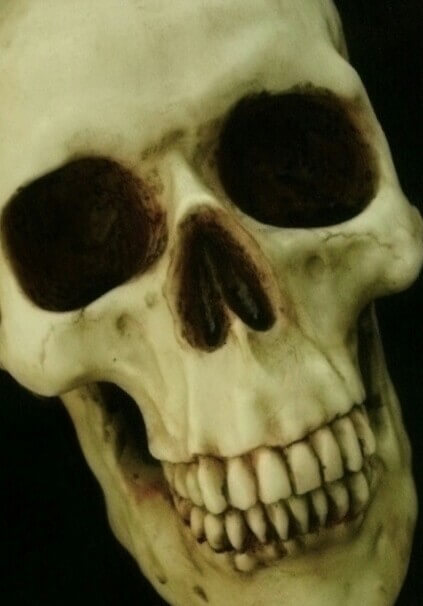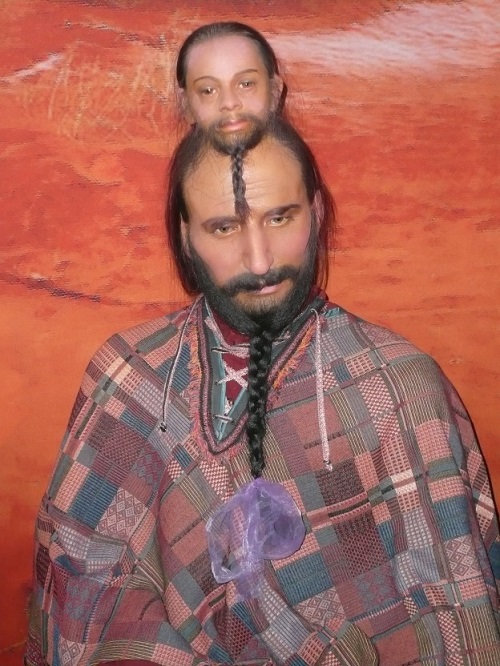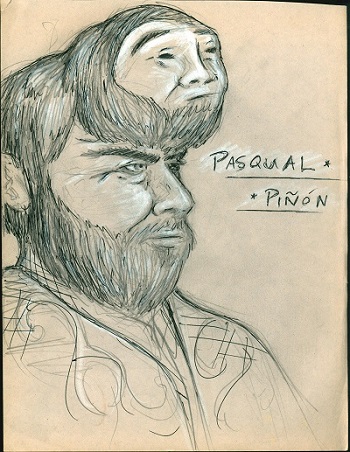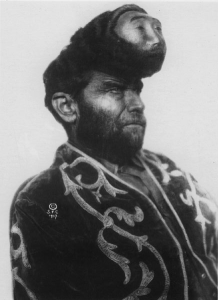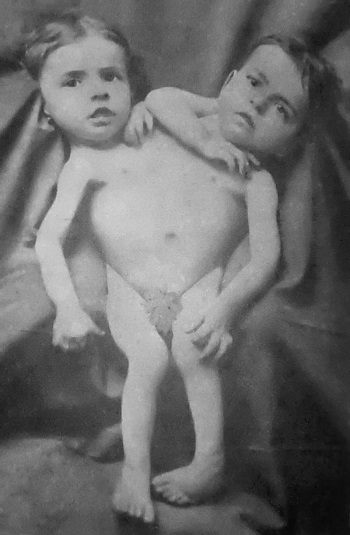Pasqual Pinon (1889-1929) was a railroad worker from Texas. Thanks to his incredibly rare deformity, he was able to support a large family of seven with a lucrative career as a circus sideshow performer. Thanks to his Pinon’s promoter, many believed he was a man with two heads.
For a similar story on a man with two faces, visit our post called Edward Mordrake: True or False? You will also want to read our article on the only case of conjoined triplets.
The Story Of The “The Two-Headed Mexican”
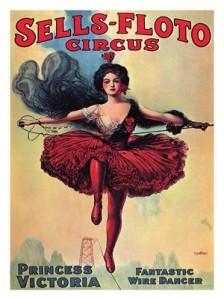
Features Of Pinon’s Second Head
- The head was immobile. According to the claim, the head was immobile because at the age of 20, Pinon had suffered a stroke.
- Its mouth was always wide open.
- Its eyes showed no emotion.
Now we are going to talk about the true story of Pinon. Although he really was a railroad worker from Texas, and a sideshow performer, he did not have an actual extra head. Instead, Pinon had an enormous benign tumor that was located at the top of his head.
Thanks to his rather unusual tumor, in 1917, he was discovered by a sideshow promoter. Although Pinon’s promoter knew his appearance would make him a good sideshow freak, it wasn’t enough. To make Pinon look even more bizarre, his tumor was transformed into a fake face that was made of wax. According to some reports, the face was made of silver. The reports also claim that the face was surgically placed under the skin. After years of touring with the Sells Floto Circus, Pinon’s manager decided to pay for his tumor to be removed.
Pinon certainly entertained many people as a sideshow performer. Although many believed his second head was real, it makes one wonder whether there were also skeptics who doubted his bizarre abnormality. After Pinon’s career was completed, he eventually moved back to Texas.
Is It Possible To Have Two Heads?
Perhaps the answer to this question depends on whether you consider cases of craniopagus parasiticus to be “one human with two heads” or “two humans with their heads attached”.
This rare type of parasitic twinning causes the head of a parasitic twin with an undeveloped body to be attached to the head of a developed twin. In some cases, there is no body, leaving just the parasitic head attached to the autositic twin.
Unfortunately, infants with craniopagus parasiticus are usually stillborn, or they will die shortly after birth.
One Of Only Ten Cases Of Craniopagus Parasiticus
There has only been 10 cases of craniopagus parasiticus reported in the medical research literature. What is even more rare is cases where these types of conjoined twins survive birth. Out of all reported cases, there are only 3 that have survived birth.
Here is a video about a real case of craniopagus parasiticus. Egyptian baby named Manar Maged had the head of a second twin (with no body) attached to her. On February 18, 2005, Manar Maged received the first successful separation of craniopagus parasiticus. She proved that it is possible for a normal twin to survive this extremely rare condition.
Sadly, just a few days shy of her second birthday, Manar died from a a severe infection in her brain.
Manar’s Twin Islaam
Manar’s twin was capable of blinking and smiling. Unfortunately, she could not live an independent life.
Dicephalus Parapagus
This is a photograph of twin brothers with dicephalus parapagus, which is another rare form of partial twinning. In these types of cases, there are two heads side by side on one torso.
In craniopagus parasiticus, the heads of the twins are joined directly together. While the autosite has a functioning torso, the parasite has nothing but a vestigial torso.
Polycephalic Animals
Although turtles and snakes are the most commonly observed two-headed animals, there are also other species with known two-headed occurrences. This is an image of a two-headed cow. It was taken at the Oddities & Curiosities Expo in Denver, Colorado (October of 2019).
A Wax Sculpture Of Pinon At The St. Petersburg Cabinet Of Curiosities
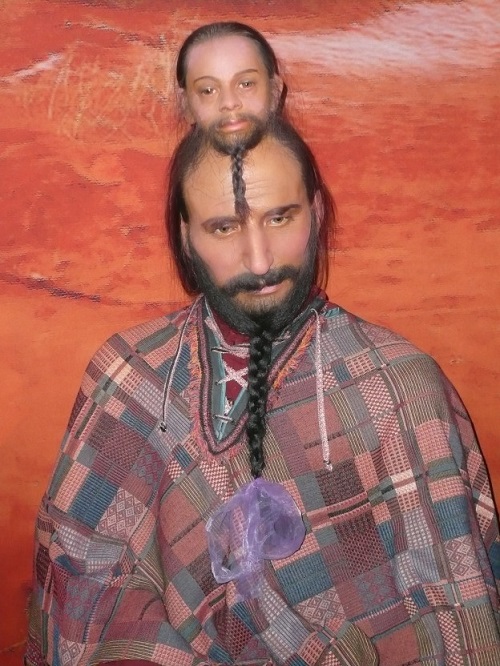
Pasqual Pinon by Stanislav Kozlovskiy is licensed under CC BY 3.0
Pinon had a rare deformity that would eventually lead him to a successful career in the sideshow business. He was quite lucky to have a promoter with such a huge imagination.
Pinon’s promoter did an excellent job making his extra head look real. Although his extra head was nothing more than an illusion, many were fooled into believing it was genuine. Although Pasqual Pinon was never a man with two actual heads, he will always be remembered as “The Two-Headed Mexican.”
